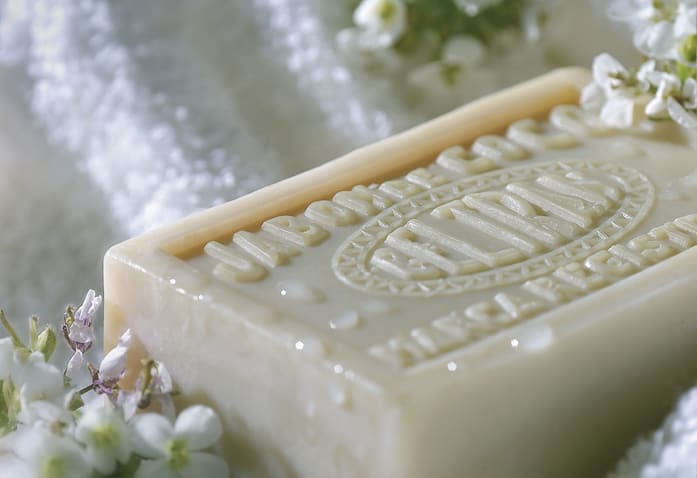Perhaps you will have heard people saying that soap made with soda cannot be natural or healthy. Actually, the exact opposite is true.
Today the Essabó blog explains why.
Handcrafted soaps are produced by one of the most well-known and oldest chemical reactions: saponification of oils and fats. Coconut and olive oils can be saponified, so when mixed with a strong base like soda and/or potash, they produce fatty acid salt (soap) and glycerine. For this reaction, the appropriate proportions of oil, soda and water need to be used. If saponification is done with soda, sodium soaps are obtained, which are solid and widely used for body hygiene purposes and as cosmetics.

Natural soap looks solid and homogeneous if it contains suitable proportions of oils and soda. If a whitish powder appears on the surface, it indicates that too much soda was used to produce soap. If we notice oil in excess, soap will be softer, oily and break up easily as its consistency is poorer. So from a glance, we can see if its manufacturing is apt or not. Even so, internal quality controls are needed in companies to avoid such soaps being put on sale.
This means that although the composition includes an ingredient like soda, in the right proportions and after the chemical reaction, these ingredients will be transformed into soap, and will no longer remain in the final product, which will be completely natural and healthy. If any oil remains in soap, it would stain. If soda remains, it would harm skin. This does not happen with any soap on the market.

A similar and representative example of chemical transformation is sea salt (sodium chloride). It is formed by chloride and sodium crystallising in an aqueous environment. After the chemical reaction, the end product is salt to be used in food (and, fortunately, no former ingredients remain).
Some “soda-less” soaps are sold on the market which, to replace soda, contain other synthetic ingredients. However, as not chemical reaction takes place, these ingredients remain in the soap formula and in the end product, and are much less natural and are, therefore, not so compatible with health and the natural environment.

